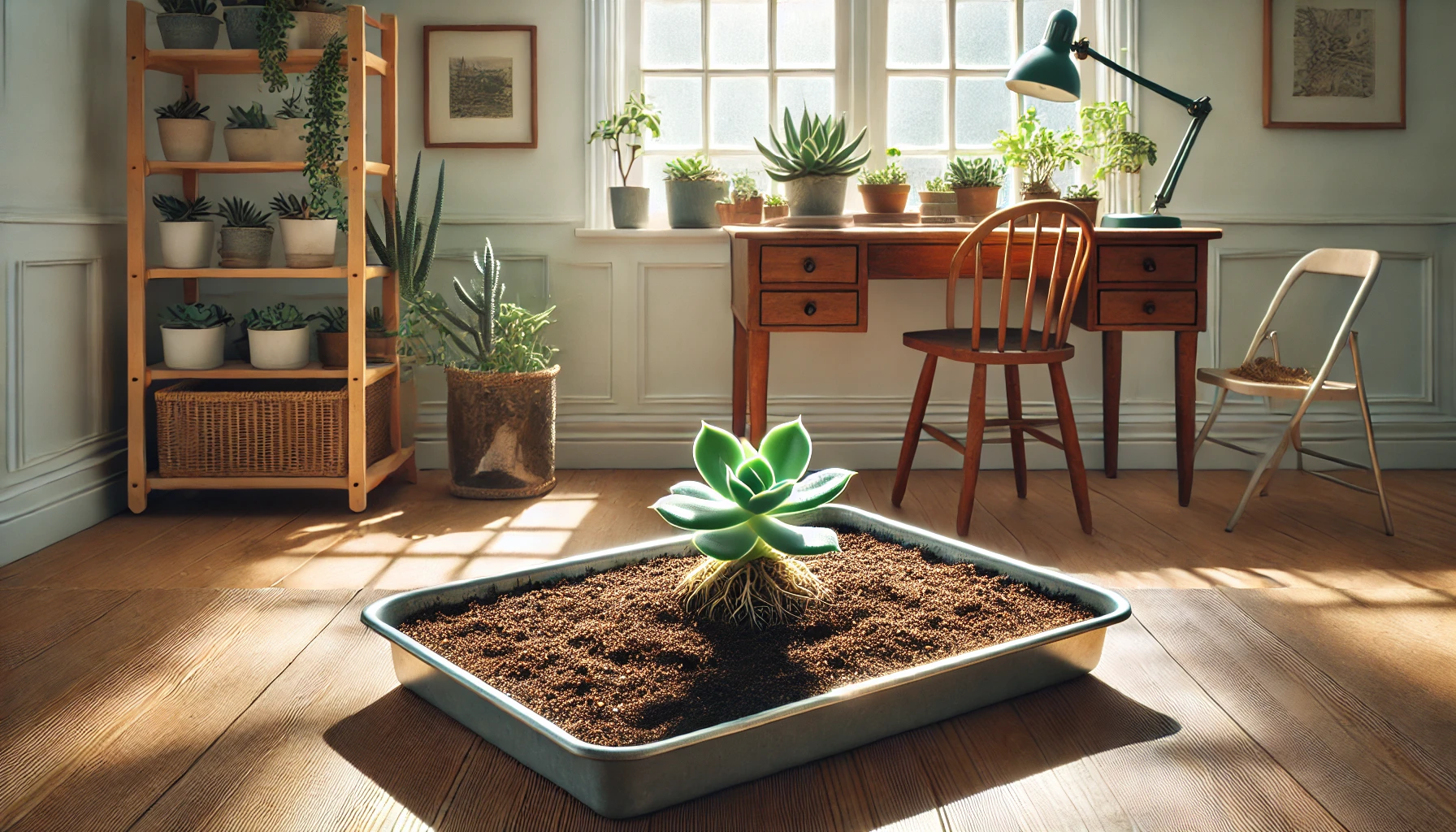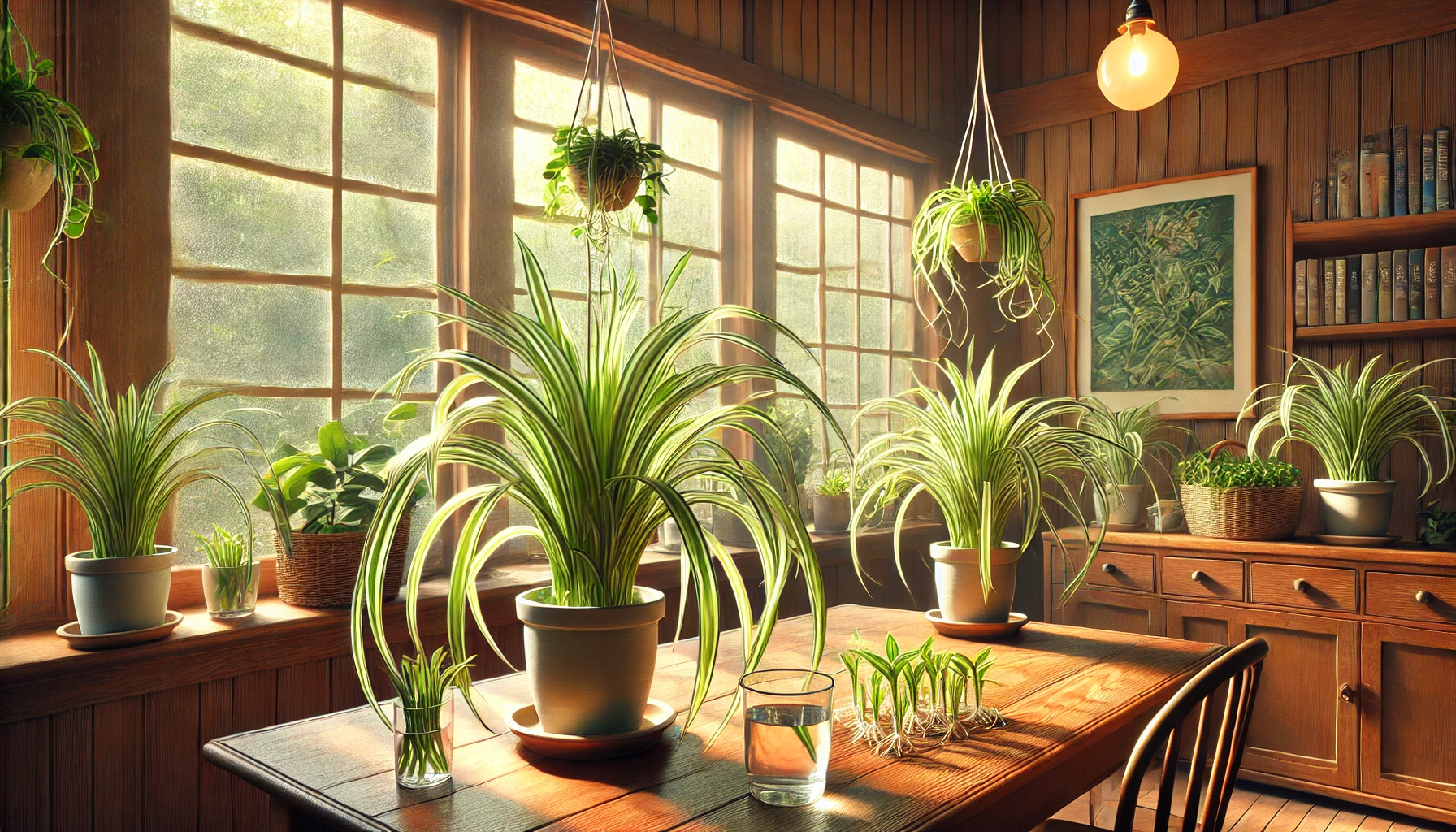
One of the joys of growing houseplants is the ability to expand your indoor garden without spending a dime. Propagating popular houseplants like pothos, snake plants, succulents, and more is a fun and rewarding way to multiply your collection. With just a few basic tools and techniques, you can easily create new plants from your favorites. Let’s dive into how you can propagate these beloved plants and watch your indoor jungle grow.
Pothos Propagation: Easy and Rewarding

Pothos, also known as Devil’s Ivy, is one of the easiest plants to propagate. With its long vines and heart-shaped leaves, it makes a lovely addition to any space. Propagating pothos is simple, and with a little care, you’ll soon have new plants sprouting up all around.
How to Propagate Pothos
To propagate pothos, begin by selecting a healthy vine. Look for a section that has several nodes, the small bumps where leaves and roots grow. Use sharp scissors to cut just below a node, making sure your cutting has at least four inches of vine.
Once you’ve taken your cutting, place it in a jar of water. Make sure the node is submerged while the leaves stay above the waterline. Set the jar in a spot with bright, indirect light, and change the water every few days to keep it fresh.
Within two weeks, you should see roots developing. When they are a few inches long, transplant your new pothos into soil. Keep the soil moist until the plant is established, and soon enough, you’ll have a thriving new vine.
Snake Plant Propagation: A Low-Maintenance Classic

Snake plants are known for their tough, upright leaves and ability to survive in just about any condition. Their resilience makes them an excellent candidate for propagation. There are two main ways to propagate snake plants: leaf cuttings and division.
Propagating Snake Plants by Leaf Cuttings
To propagate a snake plant through leaf cuttings, start by cutting a healthy leaf near its base. You can then cut the leaf into sections, each about two to three inches long. Let the cuttings dry out for a day or two to prevent rotting when placed in water or soil.
After the cuttings have dried, you can place them in a jar of water or directly into soil. If you choose water, make sure to change it regularly to keep it fresh. In soil, be sure to plant the cuttings upright, with the base end down.
In a few weeks, small roots will begin to form. Once they are well-established, you can transplant them into a pot of their own.
Division: Another Option for Snake Plants
If your snake plant has grown too large for its pot, division is a great way to create new plants. Remove the plant from its pot and gently separate the roots into smaller sections. Each section should have its own roots and a few leaves. Replant the divisions into their own containers, and you’ll have multiple new snake plants ready to thrive.
Succulent Propagation: The Fun Way to Multiply Your Collection

Succulents are a favorite among plant lovers for their unique shapes and low-maintenance care. Propagating succulents is surprisingly easy, and it’s a great way to turn one plant into many.
Propagating Succulents from Leaves
The easiest way to propagate succulents is through leaf cuttings. Start by gently twisting off a healthy leaf from the base of the plant. Make sure the leaf comes off cleanly, without breaking.
Once you’ve removed the leaf, let it dry out for a few days until the end forms a callus. This prevents rotting when the leaf is placed in soil. After the leaf has dried, place it on top of well-draining soil. Mist the soil occasionally to keep it slightly damp but avoid overwatering.
Within a few weeks, you should see tiny roots forming at the base of the leaf. As the roots grow, a new succulent will begin to sprout. Once the baby plant is large enough, you can gently remove it and plant it in its own pot.
Propagating Succulents from Offsets
Many succulents produce offsets, which are small baby plants that grow at the base of the mother plant. To propagate through offsets, gently remove the baby plant from the base, making sure it has some roots attached. Plant it in well-draining soil, water lightly, and watch your new succulent grow.
Propagating ZZ Plants: Another Great Choice

ZZ plants are known for their glossy leaves and ability to thrive in low light. They are a perfect addition to any indoor garden, and propagating them is simple and rewarding.
Propagating ZZ Plants by Leaf Cuttings
To propagate a ZZ plant, start by cutting a healthy leaf from the plant. Place the cut end in water, ensuring the base stays submerged. Change the water every few days, and within a few weeks, you’ll see roots beginning to form.
Once the roots are an inch or two long, transplant the new plant into soil. ZZ plants grow slowly, so be patient as your cutting takes its time to establish.
Propagating by Division
Like snake plants, ZZ plants can also be propagated by division. When your plant has outgrown its pot, gently remove it from the container and divide the root ball into smaller sections. Replant these sections in new pots, and soon you’ll have multiple ZZ plants to enjoy.
Propagating Spider Plants: Another Simple and Fun Option

Spider plants are a fantastic houseplant for propagation, especially since they often produce “babies” or offsets. These babies are perfect for creating new plants with minimal effort.
How to Propagate Spider Plants from Offsets
The easiest way to propagate a spider plant is by using its offsets, also known as “pups.” Once these small plants develop roots, you can simply cut them from the mother plant and place them in soil. Water them well, and they’ll quickly take root and start growing on their own.
Spider plants are fast-growing, so you’ll have a healthy new plant in no time.
Best Practices for All Propagation Methods
No matter which plant you’re propagating, a few basic principles will help you succeed.
- Use clean tools: Always use sharp, clean scissors or pruning shears when taking cuttings. This reduces the risk of introducing disease to your plants.
- Ensure proper lighting: Bright, indirect light is ideal for most propagation efforts. Avoid direct sunlight, which can scorch delicate cuttings.
- Keep moisture levels balanced: Water your cuttings appropriately. Too much water can lead to rot, while too little can prevent root development.
- Be patient: Some plants take longer to root than others, so don’t get discouraged if you don’t see immediate results. Keep caring for your cuttings, and they’ll grow in time.
Final Thoughts
Propagating houseplants is a rewarding and cost-effective way to grow your indoor garden. Whether you’re working with pothos, snake plants, succulents, ZZ plants, or spider plants, these simple methods will help you create new plants from your existing favorites. With a little patience and care, you’ll soon have a lush, thriving indoor garden filled with plants you’ve propagated yourself. So grab your scissors, find a sunny spot, and start expanding your plant family for free!
Stay connected with the world of plants! Subscribe to Phylofy for expert gardening tips, DIY projects, and eco-friendly inspiration. Join our community and nurture your love for nature. Don’t miss exclusive content and updates. Subscribe now!



